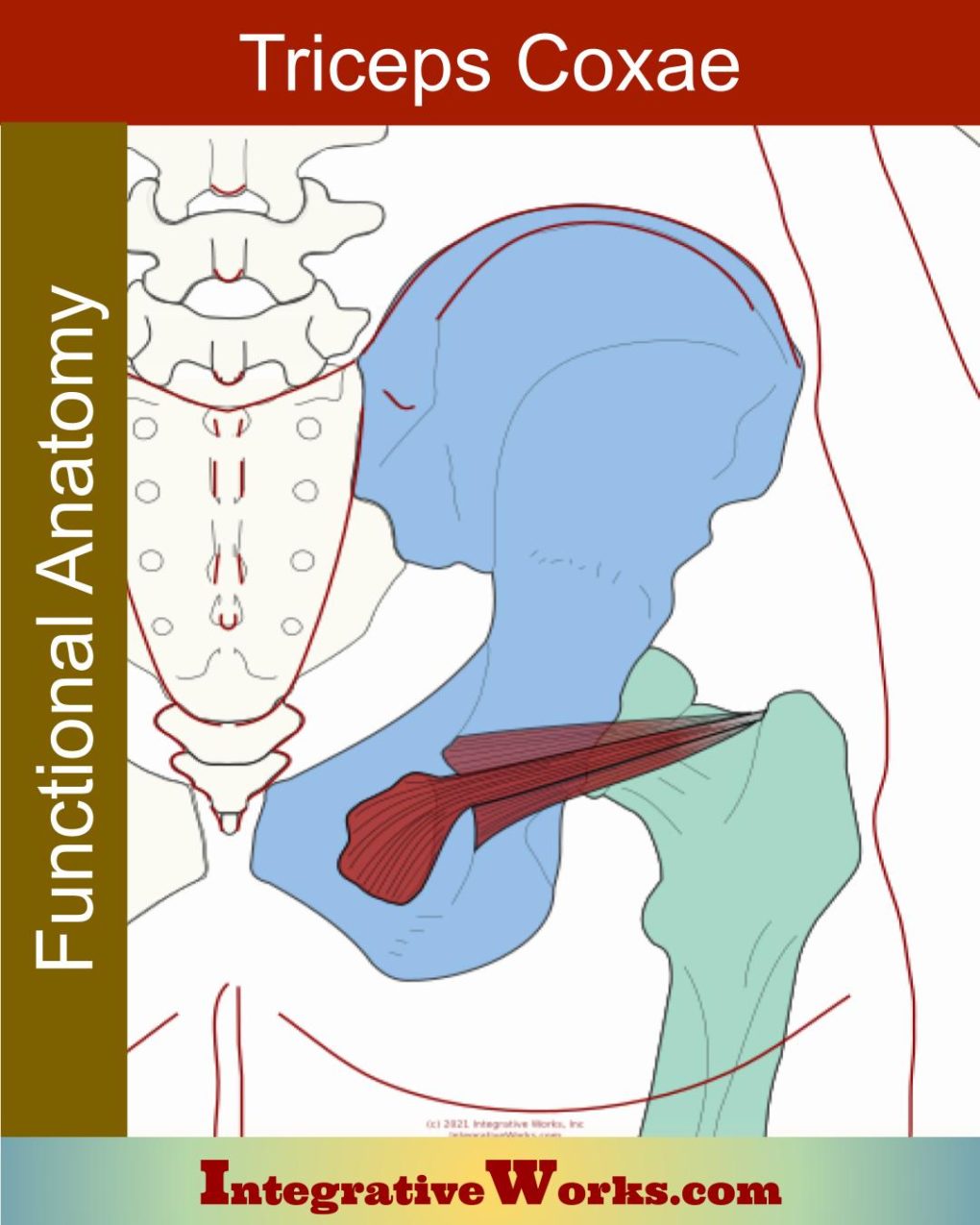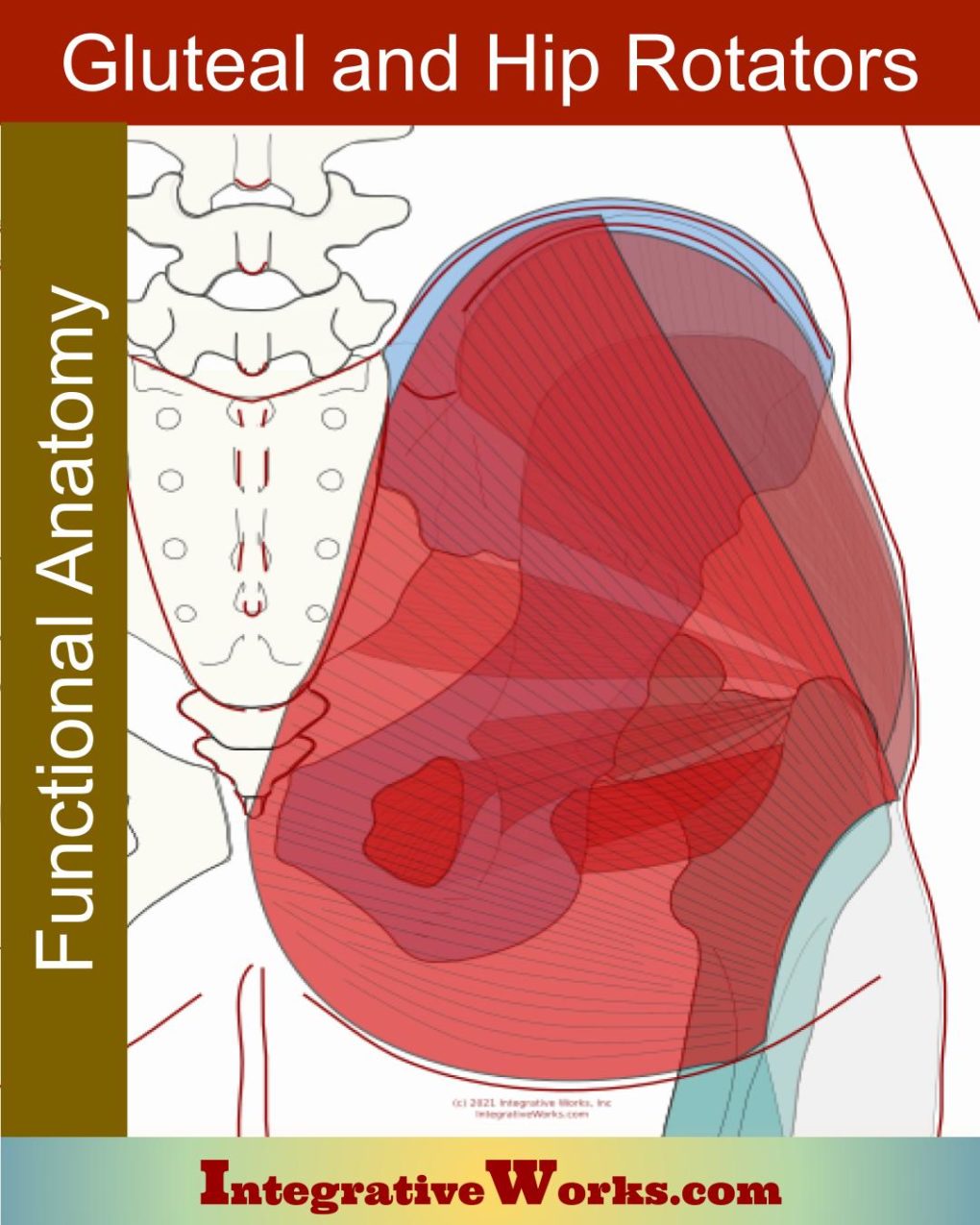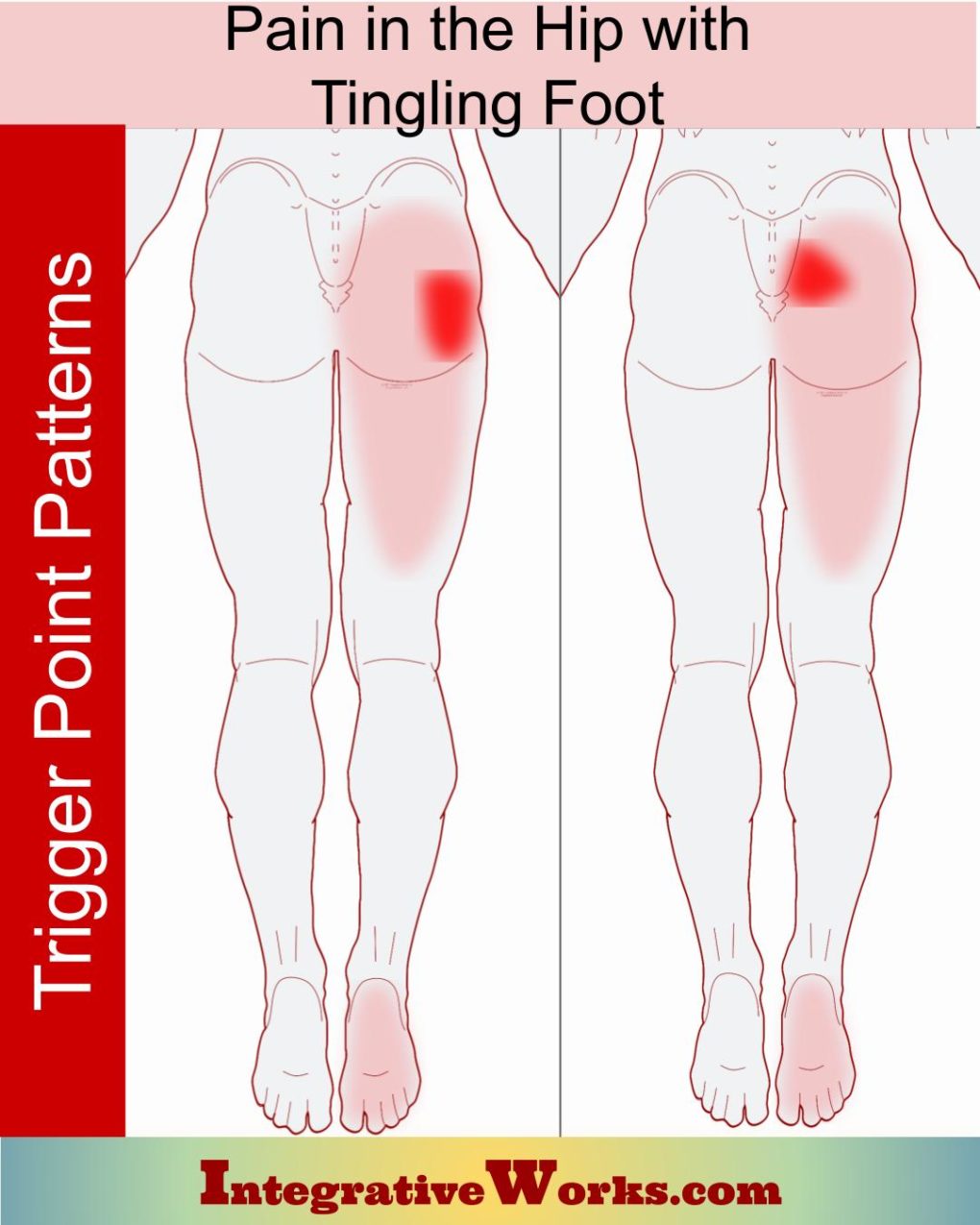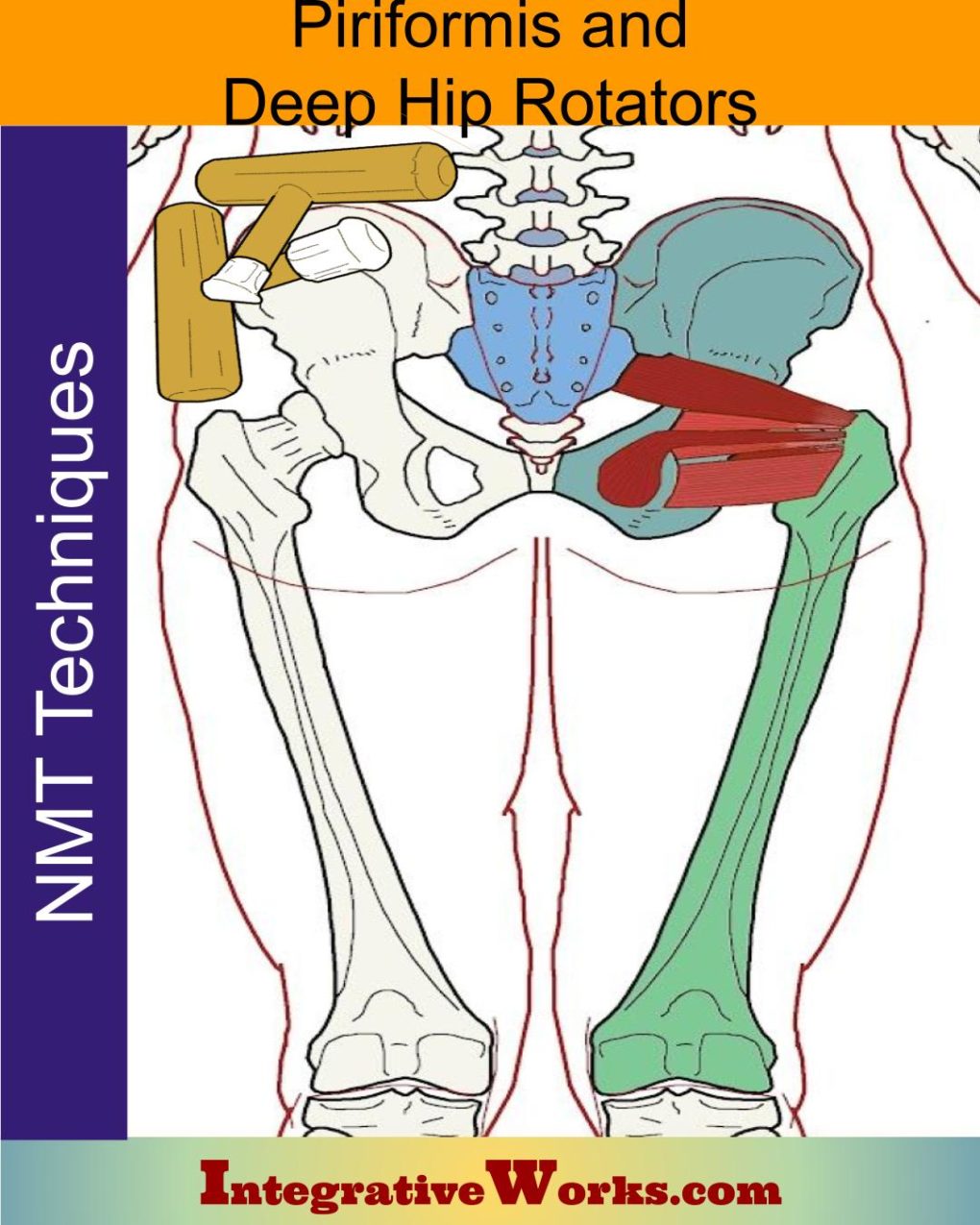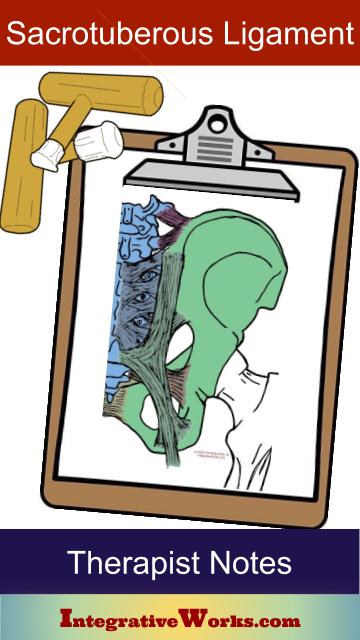Here, you will find anatomy for the triceps coxae, which consists of the obturator internus, gemellus superior, and gemellus inferior.
These three muscles were originally grouped as a single muscle. Like the triceps brachii, they have a common insertion and function. Later, they were separated because of different origins and innervation. According to one study, the innervation of these muscles is quite variable.
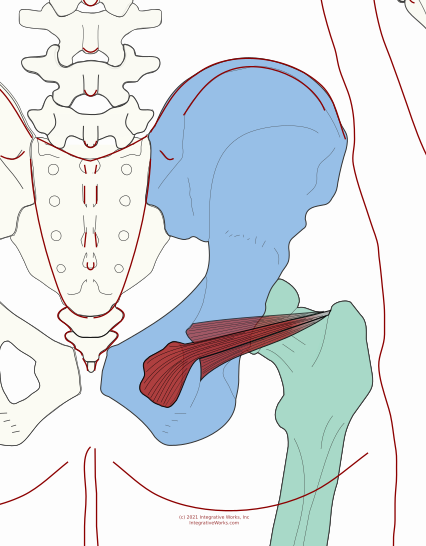
Triceps Coxae
The name “triceps coxae” refers to the muscular structure created by the obturator internus, gemellus superior, and gemellus inferior muscles.
Origin
- os coxae
Insertion
- Superior, posterior greater trochanter
Function
- external rotation of the hip
- abduction of the hip when flexed
- stabilize the hip
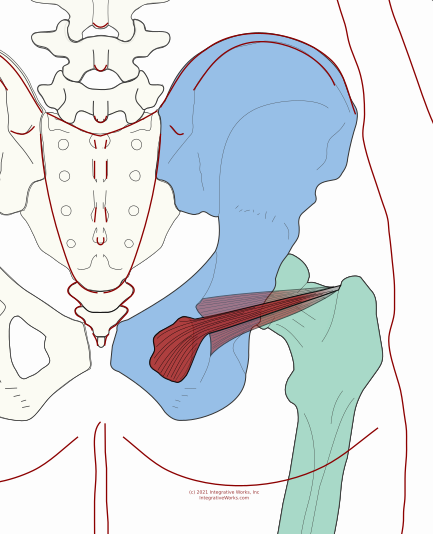
Obturator Internus
Origin
- internal lip of the obturator foramen
- internal, anteromedial aspect of the obturator membrane
Insertion
- superior, posterior greater trochanter
Function
- external rotation of the hip
- abduction of the hip when flexed
- stabilze the hip
Innervation
- obturator internus (L5,S1)
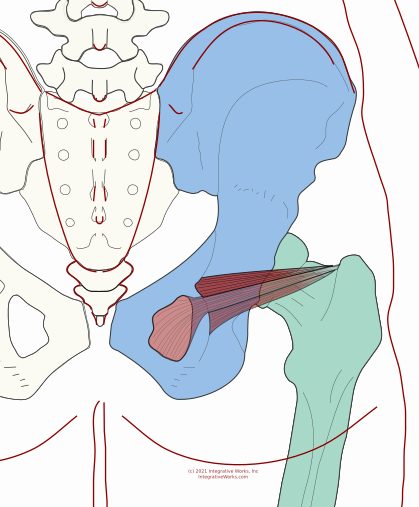
Gemellus Superior
Origin
- spine of the ischium
Insertion
- blends with the tendon of obturator internus on the superior, posterior greater trochanter
Function
- acts to assist and stabilize the obturator internus
- external rotation of the hip
- abduction of the hip when flexed
- stabilze the hip
Innervation
- obturator internus (L5,S1,S2)
Anomalies, Etc.
There are a few common anomalies in the studies that I reviewed. First, the origin may attach more superiorly to the ischium than the ischial spine. Second, there are mentions of an occasional second belly of the muscle. There are other studies of single cases with anomalies like an absence of both gemelli.
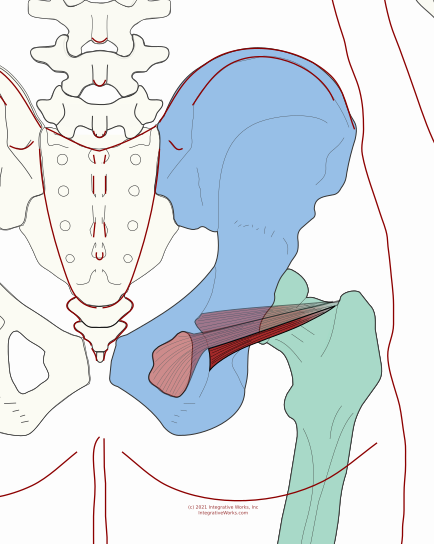
Gemellus Inferior
Origin
- ischial tuberosity
Insertion
- blends with the tendon of obturator internus on the superior, posterior greater trochanter
Function
- acts to assist and stabilize the obturator internus
- external rotation of the hip
- abduction of the hip when flexed
- stabilze the hip
Innervation
- quadratus femoris nerve (L4,L5,S1)
Related Posts
Gluteal and Lateral Hip Rotator Muscles – Functional Anatomy
Hip Pain with Tingling Bottom of Foot
Piriformis & Deep Hip Rotators – Neuromuscular Massage Protocol
Sacrotuberous Ligament – Massage Therapy Notes
Triceps Coxae
Support Integrative Works to
stay independent
and produce great content.
You can subscribe to our community on Patreon. You will get links to free content and access to exclusive content not seen on this site. In addition, we will be posting anatomy illustrations, treatment notes, and sections from our manuals not found on this site. Thank you so much for being so supportive.
Cranio Cradle Cup
This mug has classic, colorful illustrations of the craniosacral system and vault hold #3. It makes a great gift and conversation piece.
Tony Preston has a practice in Atlanta, Georgia, where he sees clients. He has written materials and instructed classes since the mid-90s. This includes anatomy, trigger points, cranial, and neuromuscular.
Question? Comment? Typo?
integrativeworks@gmail.com
Interested in a session with Tony?
Call 404-226-1363
Follow us on Instagram

*This site is undergoing significant changes. We are reformatting and expanding the posts to make them easier to read. The result will also be more accessible and include more patterns with better self-care. Meanwhile, there may be formatting, content presentation, and readability inconsistencies. Until we get older posts updated, please excuse our mess.

